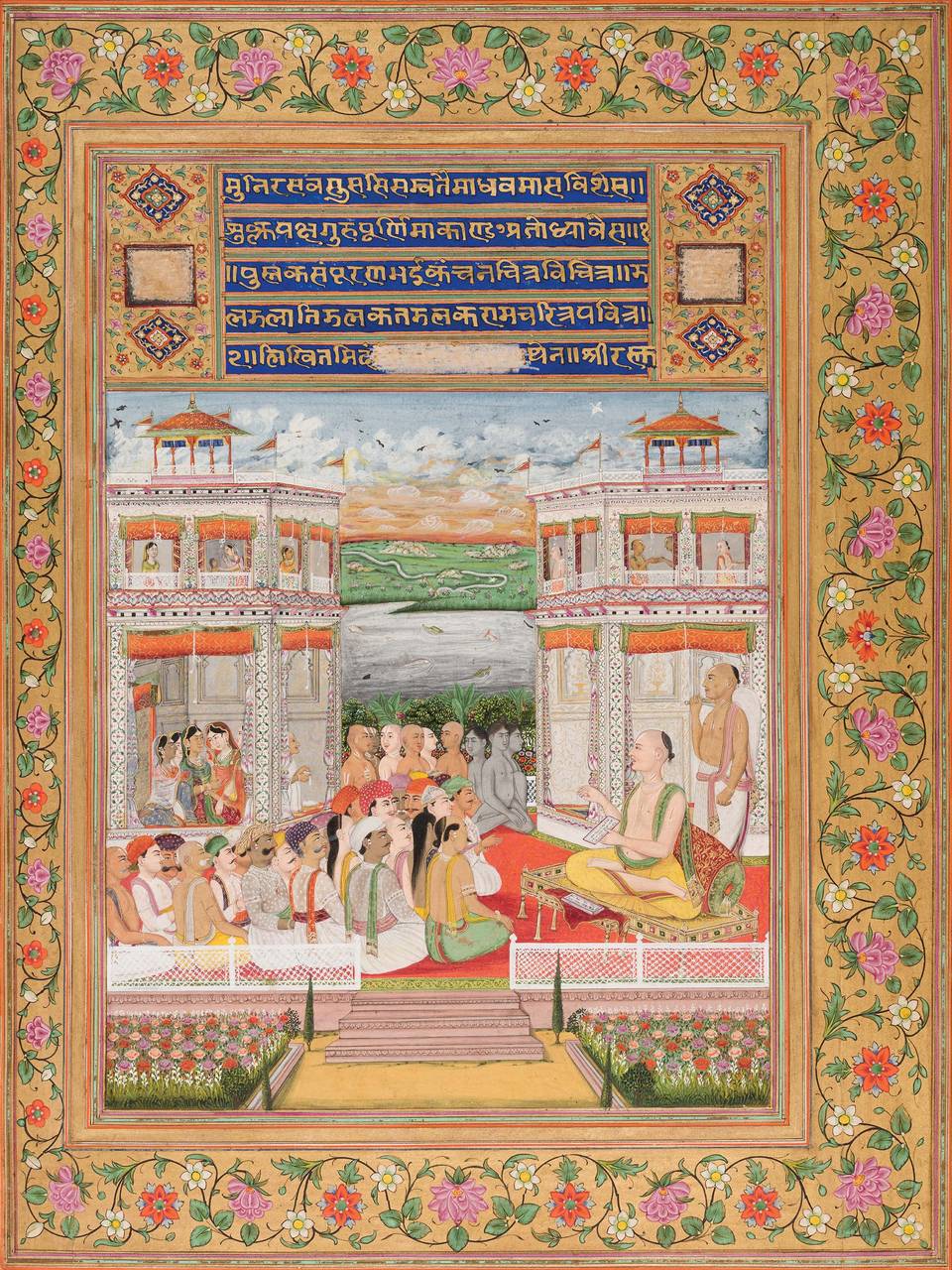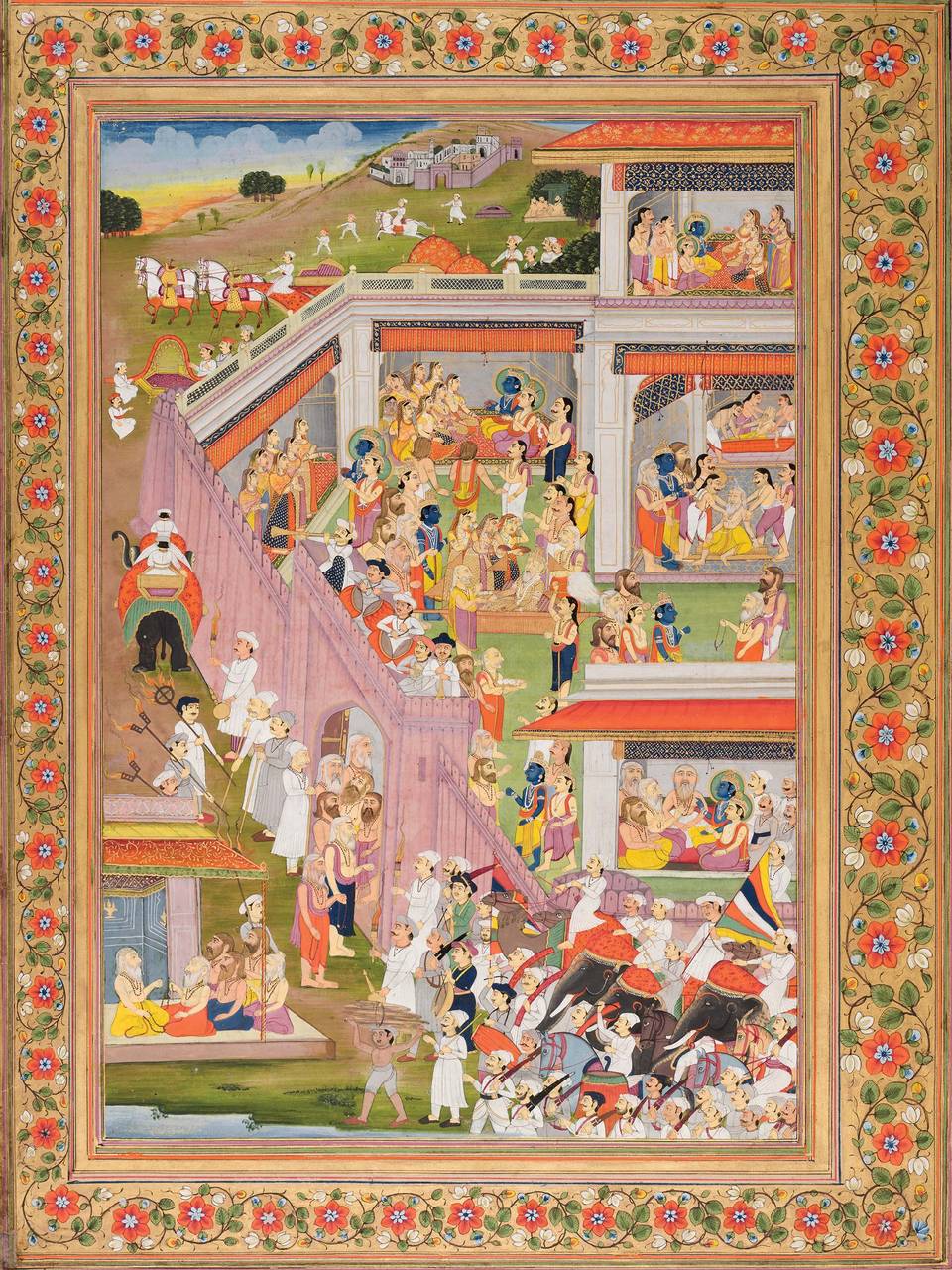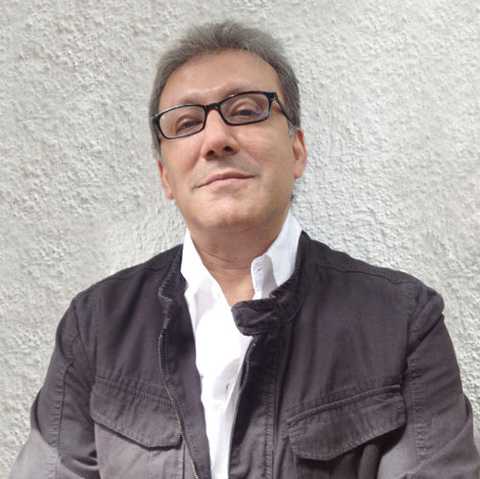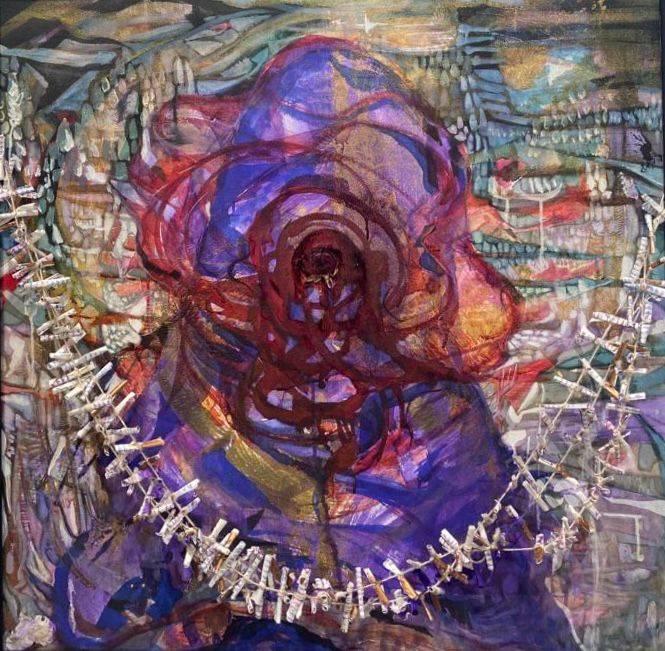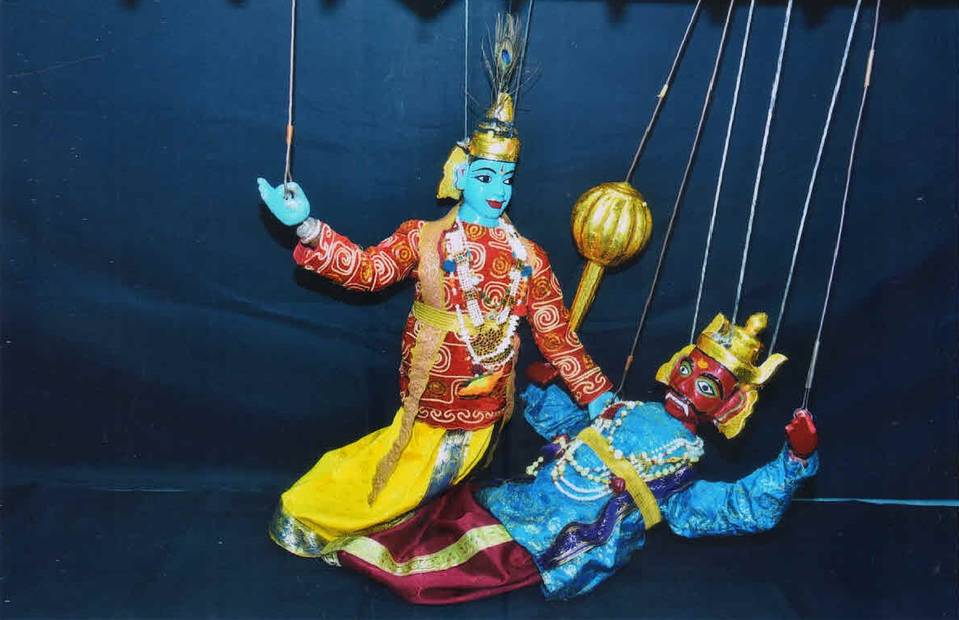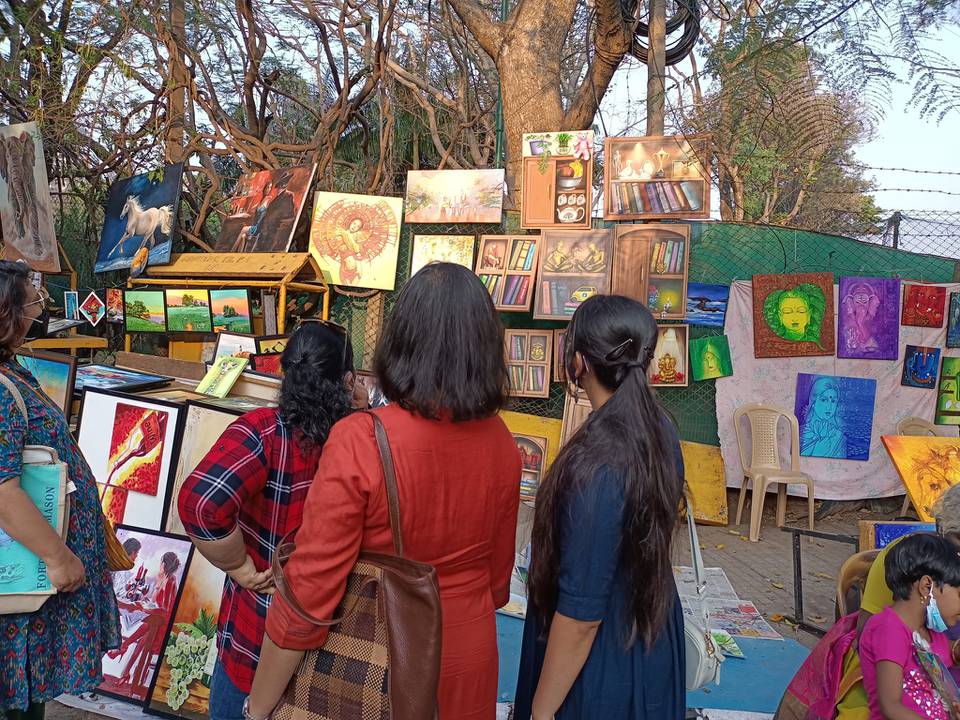The Intriguing Story Of The Book Of Gold - The Ramcharitmanas Exhibition At MAP
"Book of Gold: The Kanchana Chitra Ramayana of Banaras" at the Museum Of Art And Photography unveils a grand 18-year artistic project (1796-1814) that transformed Tulsidas's Ramcharitmanas into a dazzling masterpiece with 548 lavish illustrations, all richly gilded. This exhibition showcases 80 folios, offering a unique glimpse into a lesser-known version of the Ramayana. It's not just art; it's a testament to history's influence on art, with unexpected details and socio-political commentary.
Oct 20, 2023, 17 11 | Updated: Oct 24, 2023, 00 57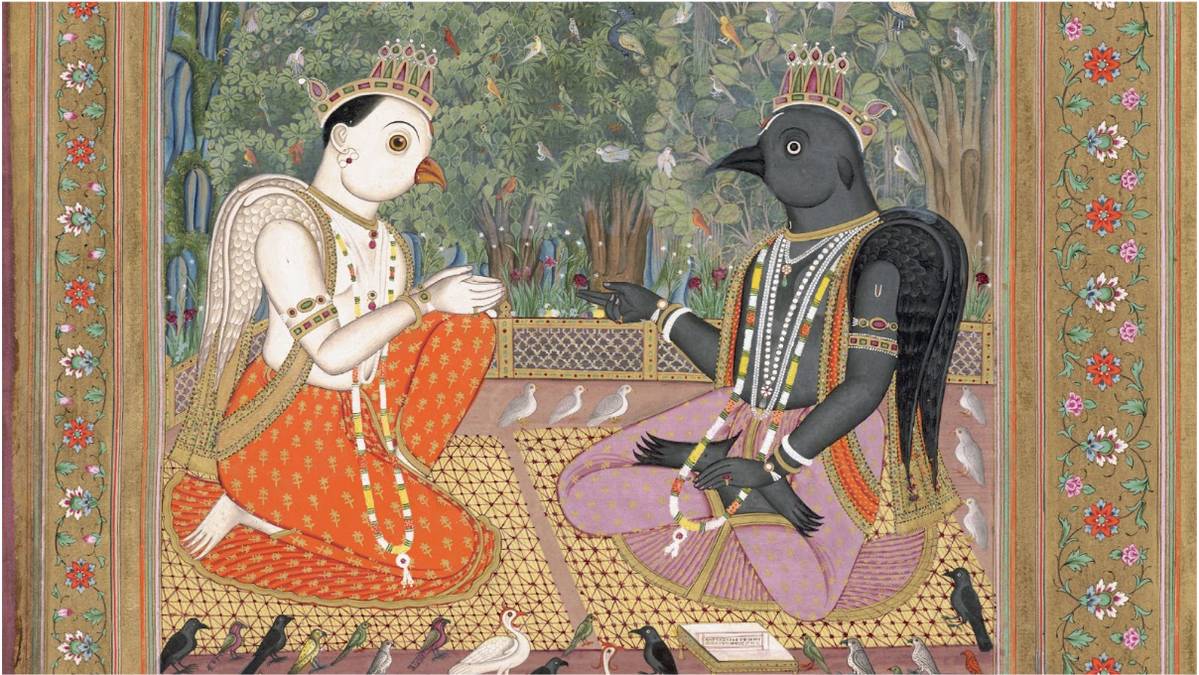
Happening now at the Museum Of Art And Photography is an exhibition titled, “Book Of Gold: The Kanchana Chitra Ramayana Of Banaras”.
The title of the show belies the excitement it harbours.
The story in the “Book Of Gold” is a retelling of the Ramayana—specifically, it is an illustrated edition of Tulsidas's Ramcharitmanas, something I will cover later.
But the story of how the book came into being is a tale tinged with the defiant assertion of an independent-minded provincial raja and his desire to make a grand cultural statement—a statement in the form of a book, that is known for its abundant use of gold (kanchana), that become integral to the fabulous illustrations (chitra) that accompany the text.
MAP Director, Kamini Sawhney—who led a small clutch of us, the lucky, through the exhibition—said, “Squeezed on all sides by the East India Company, Raja Udit Narayan, despite having just taken over the kingdom, decided to commission this project... [ambitious in scale and splendour].”
The result was The Kanchana Chitra Ramayana of Banaras, created between 1796 and 1814 by artists from various schools of art. The book contains about 548 accompanying text pages and 1100 folios with pure gold in the painting.
Great art is sometimes created in conditions, and on account of triggers, that are peculiar to that moment in history, but years later, still touches people. Rarely are there better examples of this than the “Book Of Gold”.
The Kanchana Chitra Ramayana of Banaras is a retelling of Tulsidas’s Ramcharitmanas, which I mentioned. Let me dive into that, as briefly as I can.
Inspired, he said, by divine visions and blessings, the saint and poet Goswami Tulsidas began the composition of the Ramcharitmanas. He wrote it over a period of several years, and they say he finished it around 1574.
Tulsidas’s epic—indeed a retelling of another epic—is considered to be not only a religious text but also a literary masterpiece that has had a profound influence on Indian culture and spirituality.
Significantly, Tulsidas chose to write the Ramcharitmanas in the Awadhi language. This is for several reasons, but principally to make it popular and more accessible among the common folk.
Sanskrit—the classical language in which the original Valmiki Ramayana was written—was not commonly understood by the masses. By using Awadhi, a language spoken by the people in a part of North India, he ensured that the epic could be understood and appreciated by a wider range of individuals, including those who were not well-versed in classical languages.
In the year of his ascendancy to the throne, 1796, Udit Narayan immediately commissioned the project to create an edition of Tulsidas’s magnum opus into another magnum opus—comprising illustrations that were liberally inscribed in gold. There is gold all over this book… in the decorative page margins, within the paintings and in the punctuation marks.
So, this project was initiated on Ramanavami in 1796.
Not only was the project expensive—comprising 1,100 folios adorned with 548 paintings, all lavishly gilded—but it was of considerable significance in terms of the artistic craft. With the gathering of artists from many regions, schools and disciplines—Awadh, Delhi, and Murshidabad, provinces in Madhya Pradesh—Banaras was abuzz with artists. And they worked collaboratively on the book for 18 years and it was done in 1814.
At MAP, the “Book Of Gold: The Kanchana Chitra Ramayana Of Banaras” exhibition is a curated, and wondrous, display of 80 folios from the book, that showcase the book’s seven sections, designed to explain the depth and breadth of Udit Narayan’s glittering project.

Each exhibit gives pause. Each illustration is contextually rich. And fascinating, for the individualistic interpretation by different artists that offer surprising elements that could well be considered cross-cultural for its time. In one, a gentleman wears unmistakably Persian garb. In another, a courtier is doing adaab. Let me remind you that these are illustrations of tales from the Ramanaya.
And there are the little errors and edits and afterthoughts that are inevitable in a collaborative mega-project—unfinished clouds, a moon squeezed into the painting later, (probably because the artist forgot that the painting depicts Rama looking at the sky and talking about the moon) and, in places, monkeys that look different from other monkeys in the monkey brigade on the journey to Lanka. There are other delightful things to discover.
And there is homage paid to styles—perspectives in architecture, for one. And subtle socio-political commentary, often buried deep in the visual narrative. For those unfamiliar with the artistic styles of the day, a painting could be a narrative, depicting an entire story. For example, a single folio tells the episode where Lakshmana falls on the battlefield, the resulting call for the Sanjeevini herb and Hanuman bringing the entire mountain, to save the fallen brother. All depicted in one frame (and not with the callow panel by panel linearity of a comic book).
Several of these folios are packed with a cast of hundreds of characters. A visual feast with so much detail that—it is estimated that some of them would have taken months to create and complete. Thus, the 18 years it took to complete this project, not to mention the astonishing cost of the exercise (over Rs 150,000?) is understandable.
The joy of first setting eyes upon any exhibition is one’s own discovery of little details that may not have made it to the accompanying description on the walls. (Or, if you are fortunate, as I was, have the museum director, specifically Kamini Sawhney, do it for you.)
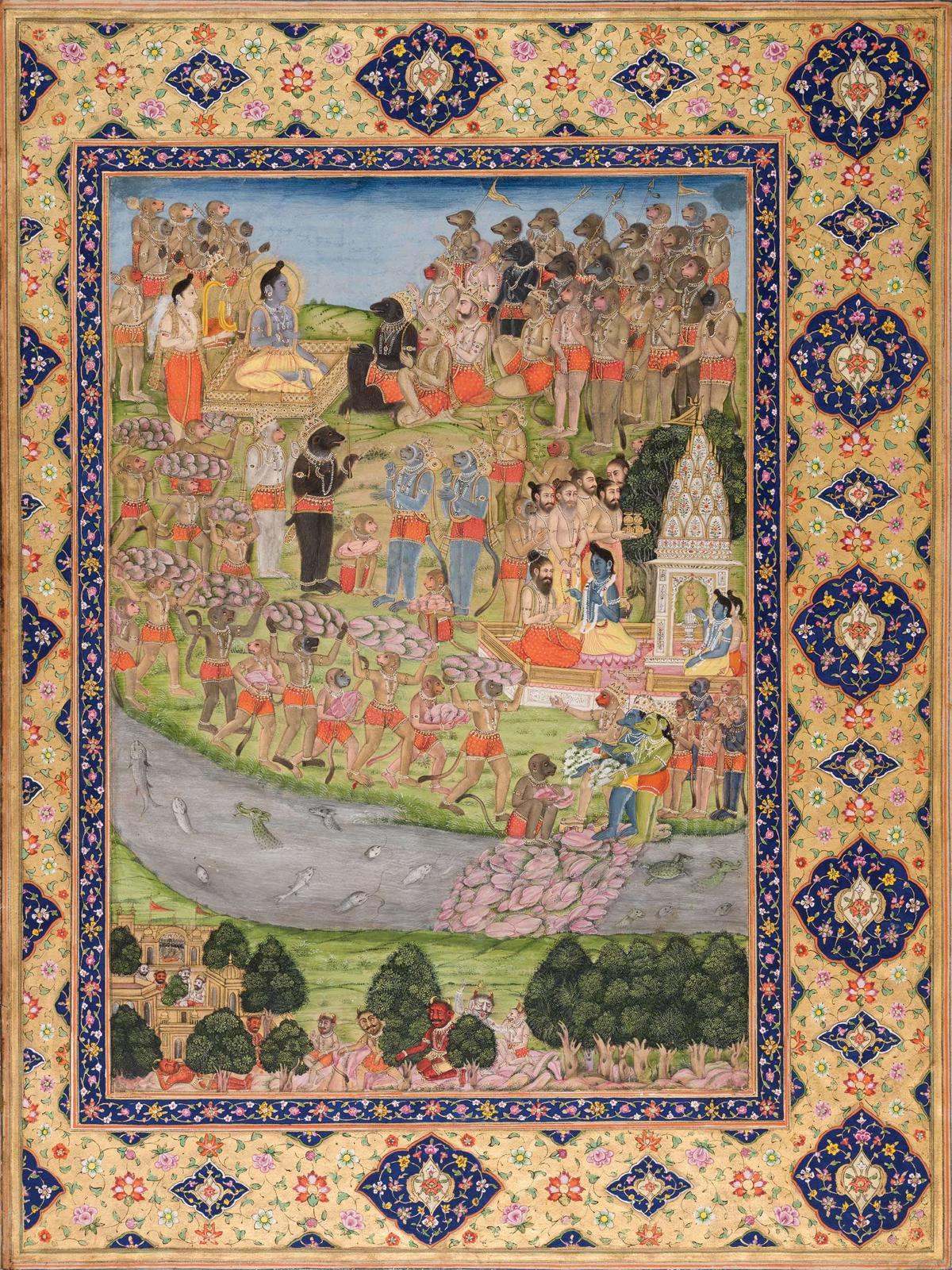
What happened to the entire original of this fabulous book? For many years it lay unsung in the private collection of the Banaras royals. But in recent years, individual folios, or pages, from the book found their way into the market—whether illegitimately or downright illegally is the lesser question. The greater question is about the loss to the world, in terms of this fascinating history. It was when the individual folios were peddled that the whole thing came to light. Sadly, as one can see in some of the exhibits at MAP, references to Udit Narayan in the text were crudely scratched out, possibly to obscure the source.
Happily, the whole of the book had been photographed by American professor Richard Schechner during the 1970s, but in black and white... it was 1970 after all. You can view the flipbook version of it here: https://online.flippingbook.com/view/799162156/2/.
The folios at MAP were mainly gifts from private collectors and this exhibition aims to decode the underlying purpose and unique appeal of that epic collaborative project. The exhibition was curated by Kavita Singh and Parul Singh. (Ms Kavita Singh passed away earlier this year.)
There's another reason why this exhibition ought to interest us in Bangalore.
It provides a window into a version of the Ramayana that is not very well known in South India. To wit, anywhere other than in the north.
We know that the Ramayana is a tale that has found its way all over Southeast Asia—as regional adaptations of the Ramayana, such as the Ramakien in Thailand or the Javanese Ramayana in Indonesia. These adaptations have integrated the Ramayana into the local culture with aspects of the retelling that might bemuse Indians. While so, the Ramcharitmanas itself is not as widely known in Southeast Asia... indeed, not in South India either.
Tamil Nadu for example has its own version of the Ramayana called the "Kamba Ramayana," written by the Tamil poet Kambar. The Kamba Ramayana is highly regarded in Tamil literature and culture, and it presents the Ramayana story in a way that resonates with the Tamil-speaking population.
In Karnataka, the popular versions of the Ramayana would be the "Kumudendu Ramayana" (a Jain version), written in 13th century and the "Kumara-Valmiki Torave Ramayana", written in the 16th century. There is another version titled "Ramachandra Charita Purana" written by Nagachandra during the 13th century. (There is also a rather tenuous link to the influence of 10th century Jain poet Ranna, author of the Ajitha Purana, but that is to chase down another rabbit hole.)
The Kannada Ramayana is distinct from other regional adaptations of the Ramayana and reflects the cultural and linguistic nuances of Karnataka and these works are often celebrated for their artistic and literary merits. The many adaptations and variations of the Ramayana in Karnataka—and the story of course—remain an integral part of the cultural and religious tapestry of Karnataka, performed ften in various forms of traditional art and storytelling, in the state.
The Kamba Ramayana, Kannada Ramayana, and other South Indian retellings of the Ramayana are more prominent in the cultural and literary landscape of the South. While the Ramcharitmanas is respected and known to some extent in South India, it doesn't hold the same central position as it does in North India.
The exhibition at MAP offers another window, thus. But the more compelling window through which one looks, is at the grandeur of the Book Of Gold itself, and equally, the fascinating evidence of how the goings-on in its time might have influenced depictions of the Ramchitramanas.
EVENT LISTING. https://bangalore.explocity.com/events-in-bangalore/book-of-gold-the-kanchana-chitra-ramayana-of-banaras-z9hf/
Museum of Art and Photography's (MAP) listing in the Explocity Bangalore Guide: https://bangalore.explocity.com/bangalore-guide/listing/museum-of-art-photography-map-museum-site/
Image Gallery
